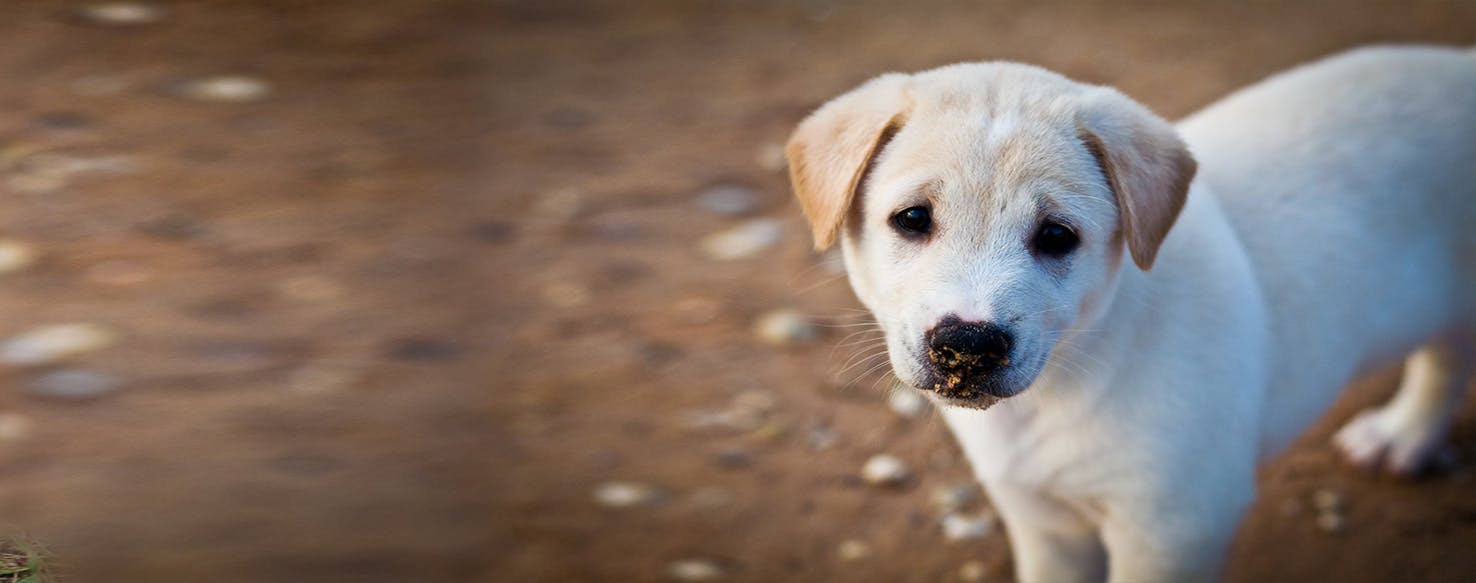- Home
- The Daily Wag!
- Behavior
- Why Dogs Don't Like To Be Declawed

Unusual
Irregular
Everyone’s been talking about cat declawing recently – whether or not it’s useful, if it’s harmful for the cats, the reasons for doing it, etc. But did you know the exact same type of conversation has sprung up regarding dogs? While dogs don’t traditionally have all their claws removed, the dewclaw, a specific claw on some (but not all) breeds of dog, has been removed for various reasons in the past. As an evolutionary holdover, some vets and breeders see the dewclaw as unnecessary; however, some trainers – especially those working with dogs for agility courses – think that the dewclaw shouldn’t be removed.
Why has it been removed in the past? What are the reasons for removing it? And, most importantly, how does your dog feel about being declawed? Let’s talk about that.
Dogs use their claws in much the same way cats do; their claws help them balance, grip items, and – in some cases – even climb trees. However, some owners don’t appreciate the way that dog claws can scratch hardwood floors or leather furniture, and many breeders see the dewclaw as an evolutionary holdover that isn’t necessary for today’s domesticated dogs.
Fully declawing your dog, which is called an onychectomy, can have a severely negative impact on your pet’s mental and physical health and well-being. It can lead to arthritis, spinal injuries or deformities, generalized pain, difficulty walking, and more. In fact, fully declawing any animal, be it dog or cat, is considered animal cruelty in a number of countries, and has become an increasingly controversial procedure in the US.
Dewclaw removal, while less controversial, has been growing increasingly unpopular in modern pet owner circles. While there are some legitimate reasons to remove a dewclaw (for example, if you have a hunting dog and want to ensure the claw doesn’t get caught or torn on brambles or rough terrain), many pet owners don’t see a reason to remove their dog’s dewclaws. If you do choose to remove the dewclaw, doing it when your dog is a puppy is the best bet; doing it when they’re being spayed or neutered is the second-best time to remove the claw.
As dewclaw removal becomes less popular, proper nail upkeep becomes more important. If you’ve chosen to keep your dog’s dewclaws intact, you must be sure to regularly trim the nail; because it doesn’t make contact with the ground, it has no natural way of wearing down, and can become ingrown and infected if left unattended for too long. This will negatively impact your dog’s ability to move properly, will cause them anxiety and pain, and could potentially lead to bigger issues if left unattended. If possible, it’s best to trim your dog’s claws (including the dewclaw) every time you groom your pup, whether you take them to the groomer’s or handle it yourself. That way, you get into a routine, and won’t forget to trim those claws back!
Need advice about your pet's health?
Get answers fast from a veterinary professional 24/7 in the Wag! App.
Get Vet ChatSome breeds of dogs don’t have dewclaws at all, and therefore you don’t have to worry about your pet feeling the loss of a claw many professionals consider unnecessary. However, working-breed dogs are often recommended to have their dewclaws removed for the reasons mentioned above; dogs moving quickly through brush may have their dewclaws snag or tear, causing your dog trauma.
If your dog’s dewclaw is removed properly when they’re a puppy, they often don’t show any ill effects. However, older dogs may be upset at losing that appendage, as some dogs can use their dewclaw for holding onto toys, bones, and other playthings, or even digging food out from between their teeth. Some dogs also use the dewclaw to scratch more sensitive areas of their body, such as by their eyes or in their ear, because the claw has less musculature and is therefore less likely to cause injury.
Whether or not you’ve chosen to remove your dog’s dewclaw (or declaw them completely, though we absolutely don’t recommend this), it’s important to monitor your dog’s overall mood, health, and activity levels. We don’t recommend declawing an older dog or one with pre-existing health issues, as the strain may cause your dog to have an adverse behavioral reaction.
It’s important to remember that some breeds of dog don’t have a dewclaw at all, some have dewclaws only on their front legs, and some have dewclaws on both the front and back legs. Some dogs even have a higher percentage of being polydactyl pets – they have more than one dewclaw!
If your dog has injured their dewclaw before, you may want to look into its removal to ensure the safety of your pet. Obviously, having a part of the body that can be a continuous injury risk is not beneficial to your dog. Just don’t expect them to enjoy the procedure – or the cone of shame afterward!
Your dog trusts you, and there are many safe ways to remove a dewclaw that leave your pet happy and healthy. We highly recommend against removing all your dog’s claws, or even just front claws, because of the mental and physical damage this could cause your precious pup. Do your research and understand what you’re committing your dog to, and you’ll know the best way to take care of your dog and make sure they’re not in pain or inconvenienced (and neither are you)!
Written by a Poodle lover Sarah Jeter
Veterinary reviewed by:
Published: 03/14/2018, edited: 01/30/2020
More articles by Sarah Jeter

